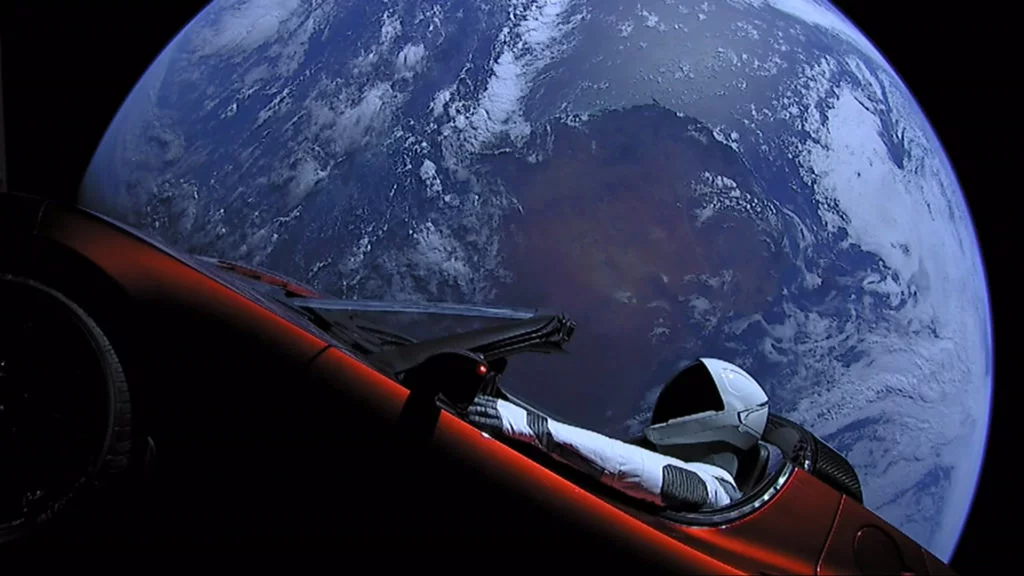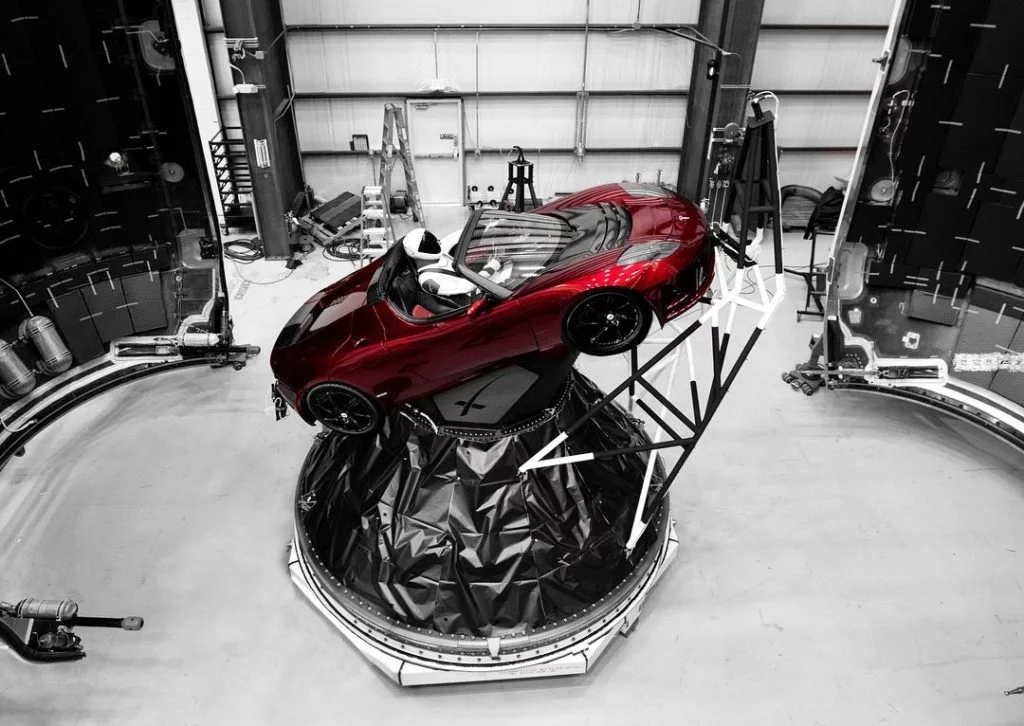On the 6th of February 2018, The Falcon Heavy launched Starman in a Tesla Roadster into space. During this spectacular event, SpaceX Starman orbited the Earth for 6 hours, capturing beautiful images before the Falcon Heavy upper stage sent the car into an orbit around the sun.

But where is Starman now?
And will we ever see him again?
Let’s look at the long journey Starman has been on since leaving Earth and when he might return to Earth and the possible solutions.

After SpaceX Starman left Earth’s orbit, scientists and amatuer astronomers around the world pointed their telescopes towards the night sky in order to track the Roadster and predict its future orbit.
A team at JPL used data provided by SpaceX and predicted that Starman would pass by Earth in the year 2091, getting within a few thousand kilometres.
This model proved to be accurate for the first few months, but since it was made from a limited amount of data, anything beyond that became increasingly inaccurate.
Thanks to an observation of the Roadster seen from a telescope in South Africa, JPL were able to refine their measurements and accurately predict Starman’s path for the next 50 years.
They concluded that SpaceX Starman is on a path that will pass by Mars in this year, getting within 4.5 million miles.
At this point, the current telescopes we have on Mars won’t be capable of observing an object as dim as the Roadster. Starman will make a closer approach to Mars in the year 2035, getting as close as 1.5 million miles.
By then, it’s likely that we’ll have more advanced telescopes on and around Mars to capture an image of the Roadster, even if it’s just a tiny dot in the sky.
Starman will make its closest approach to Earth in the year 2047, passing by at just 3 million miles. At this distance, telescopes on Earth will be able to observe the Roadster and record its position in the sky, giving us a more refined prediction for many years to come.
But what if we were able to catch Starman during this close approach? The idea of retrieving satellites from space isn’t unheard of. Due to the enormous payload bay on the Space Shuttle, it was capable of retrieving faulty satellites and returning them to back to Earth. During STS-51, astronauts managed to grapple two communication satellites into the payload bay using EVA jet packs and the Shuttle’s robotic arm.
Those satellites were returned to Earth and sold to new customers who relaunched them into the correct orbits.
However, retrieving satellites outside of Earth’s orbit is much more challenging and requires a lot more energy.
A Japanese spacecraft which launched in 2014 has slowly made its way out to an asteroid 180 million miles from Earth. It has already managed to retrieve samples from the surface and it will continue to survey the asteroid before returning those samples back to Earth this year.
Although the Roadster is a much heavier sample to bring back from space, Starship could follow a similar plan to retrieve the Roadster.
With the enormous capability of Starship, it could refuel in Earth’s orbit and perform a maneuver to match the Roadster’s orbit.
With a large amount of fuel remaining, it could then capture the Roadster and store it in the payload bay before returning to Earth.
So perhaps one day, many years down the line, the generation that experienced the iconic Falcon Heavy launch will be reunited with Starman and his Roadster or perhaps, it’s best to let him wander the solar system forever like a mascot for human civilization.
Read how SpaceX lands its rockets autonomously on Drone ship and on land here.
Additional Resources:
